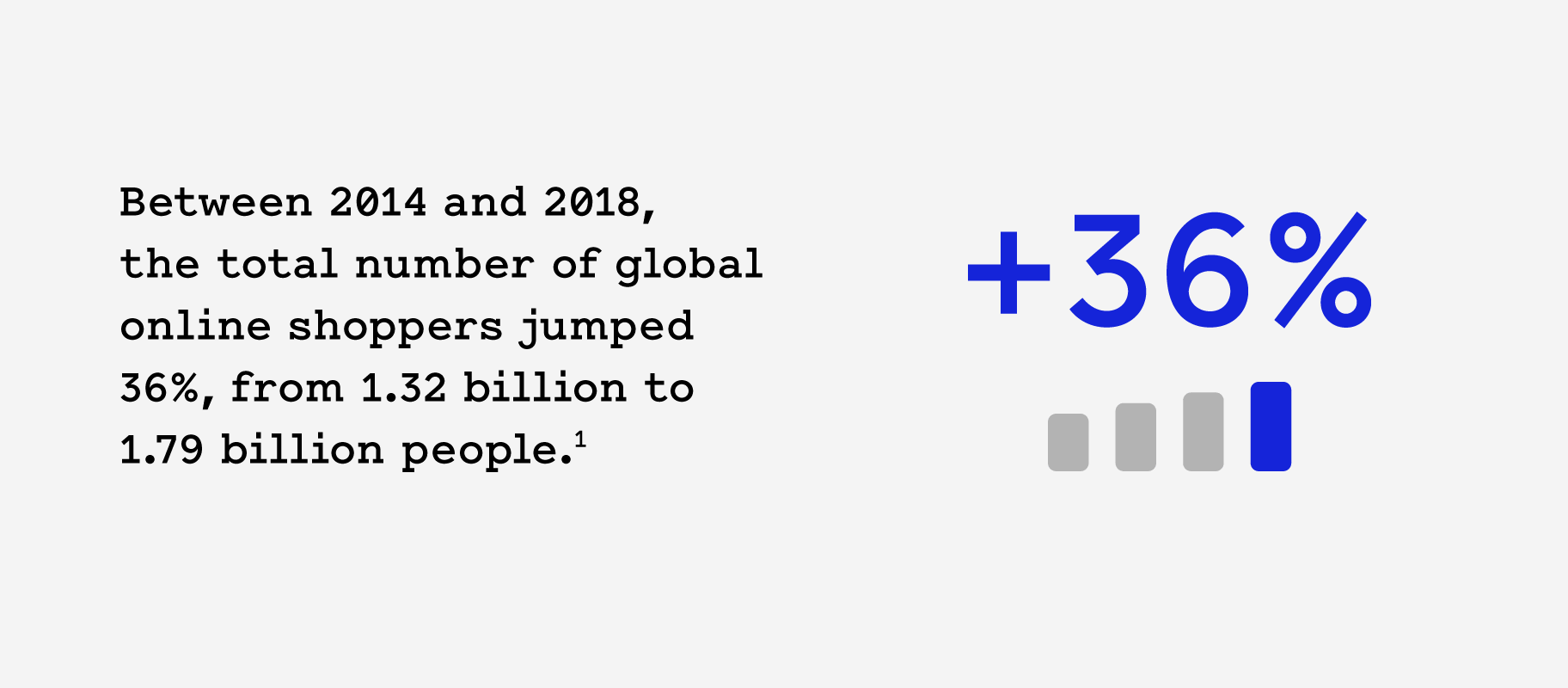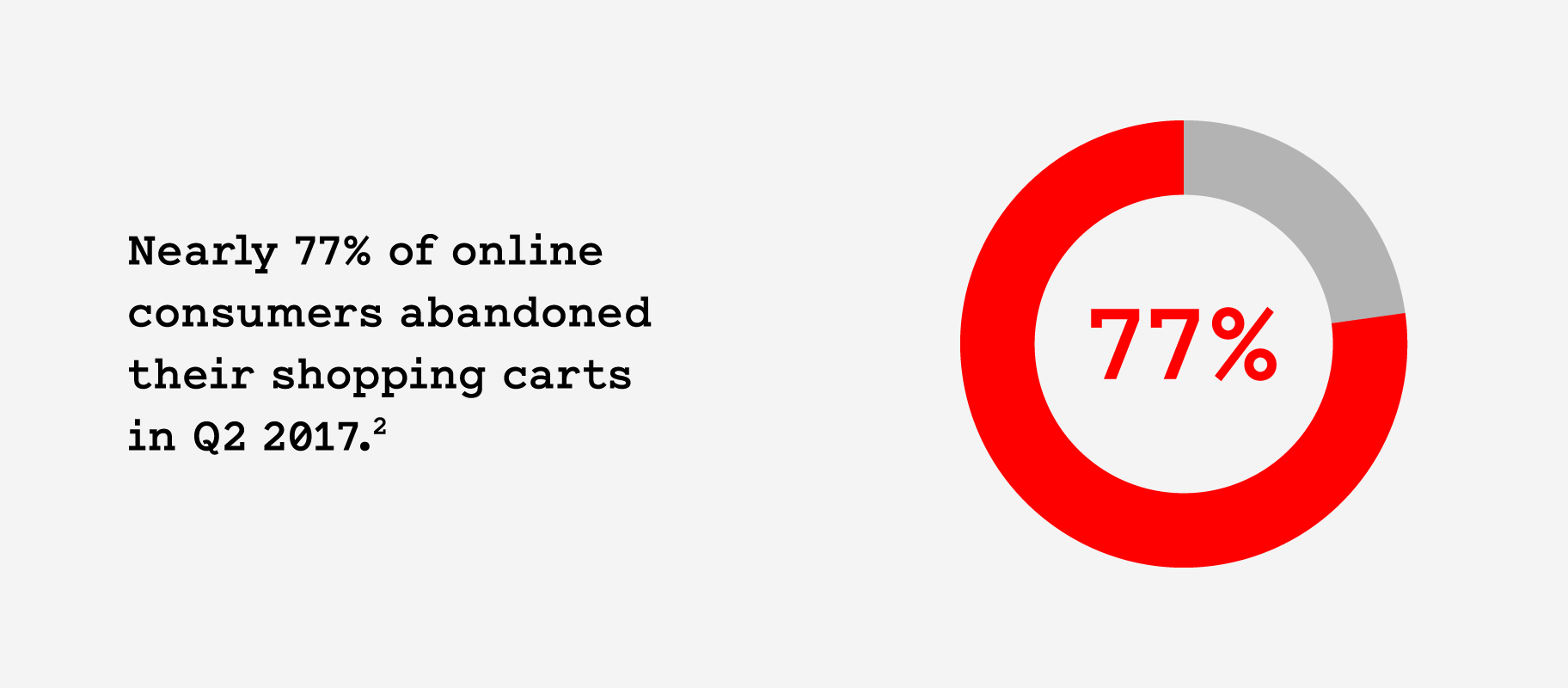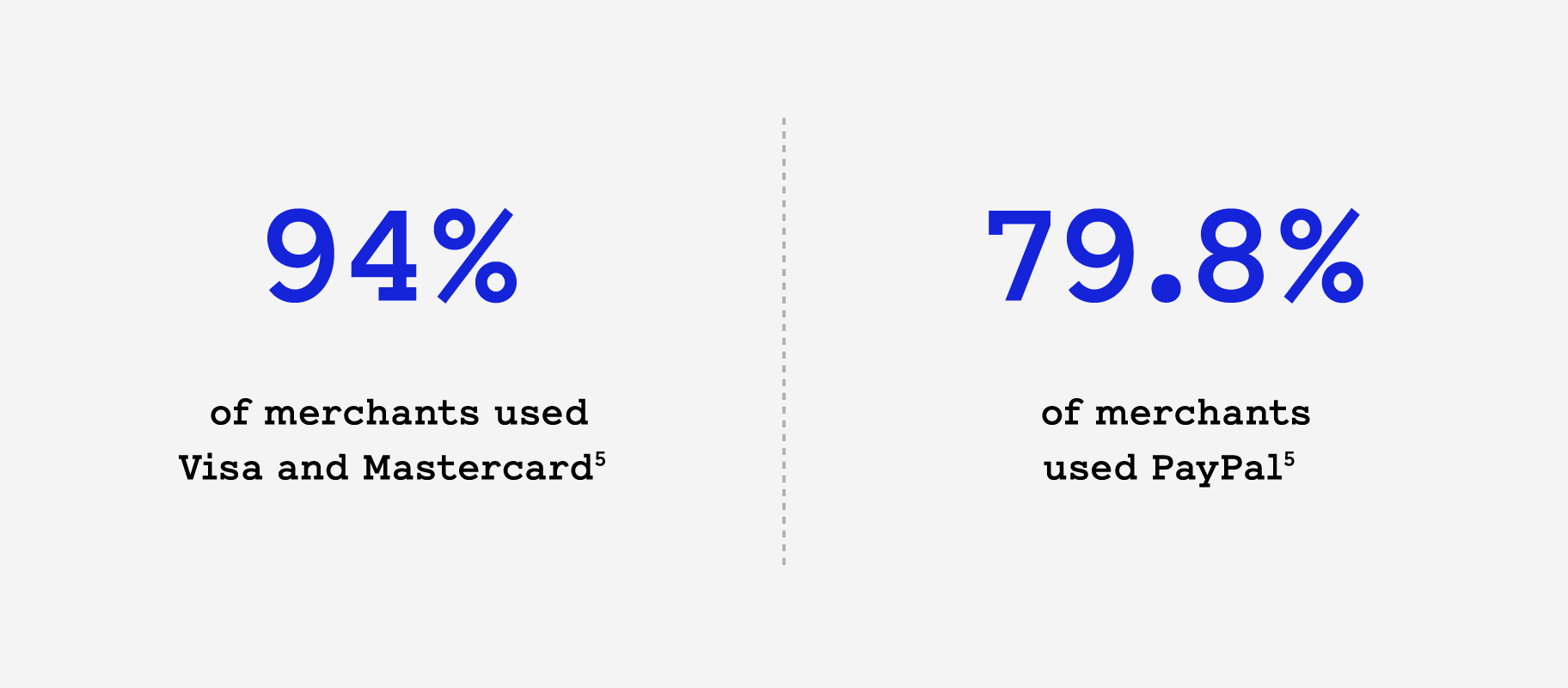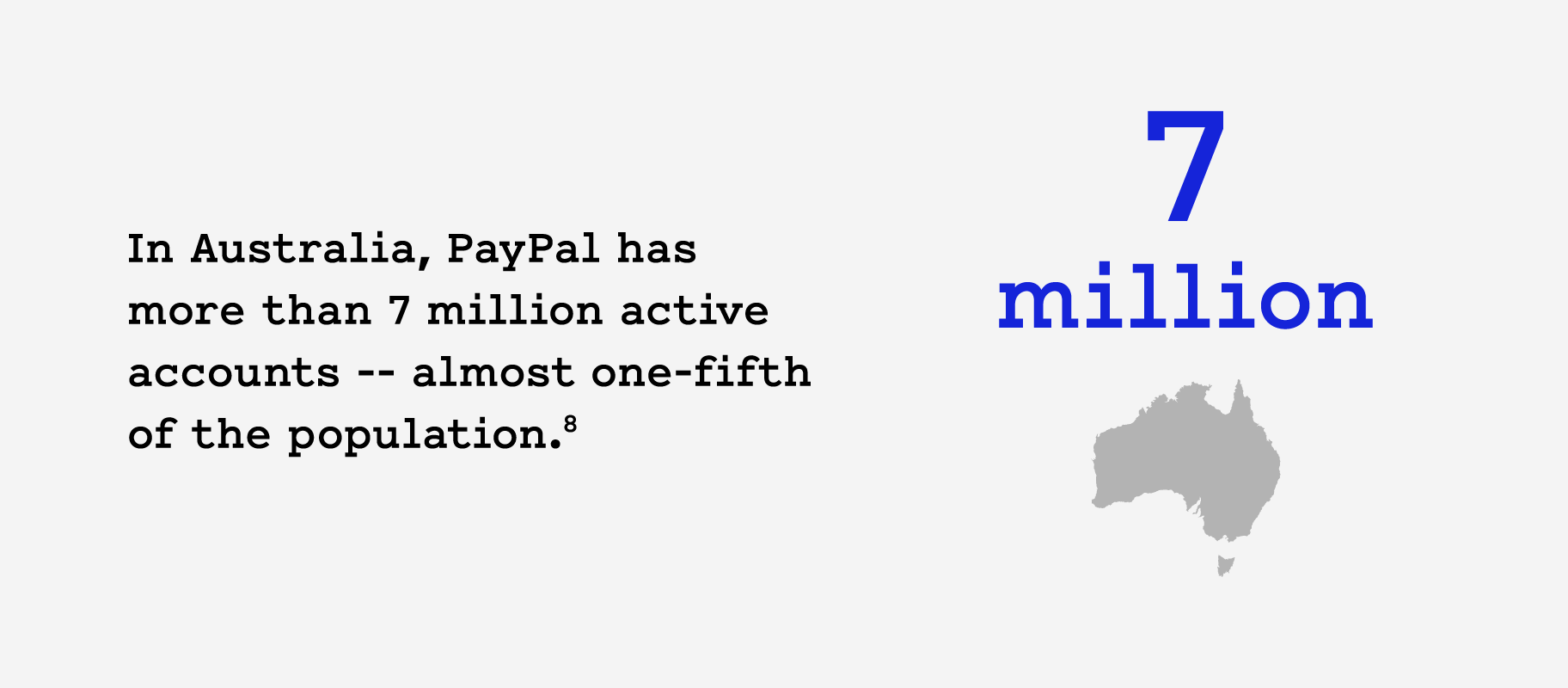The internet knows no borders and neither do buyers. Between 2014 and 2018, the total number of global online shoppers jumped 36%, from 1.32 billion to 1.79 billion people, according to research firm Statista.1 Those online shoppers increasingly want to buy things internationally, but there's a catch: They want cross-border transactions to feel just as simple as any other purchase.

Merchants that serve cross-border customers can find that challenging. They face variations in languages, checkout processes, and payment options. These complexities can create friction, and that friction can lead to lost sales. Nearly 77% of online consumers abandoned their shopping carts in Q2 20172 and one of the top reasons for doing so is that the checkout process is too long or complicated.3 So what can merchants do to unlock a greater share of cross-border commerce?

Braintree partnered with research firm PYMNTS to find out. The PYMNTS X-Border Optimization Index study examined 183 global enterprises in 10 countries/regions along nearly 50 attributes relating to ease of use, access to information, paying, and shipping.
The index scored merchants on a scale of zero to 100 for ease of doing cross-border business. The average merchant scored 58.1 in Q3 of 2017, an increase of just over 2% from Q1 of that year.4 But this modest increase conceals great news: The data suggests that the strategy for optimizing cross-border commerce might be simpler than previously thought.
When it comes to payment options, less may be more
Until recently, the received wisdom was that if merchants wanted access to an international market, they'd have to adopt its regional payment options, which usually adds complexity via regulatory, operational, refund, and dispute flows. But this wisdom is no longer true. In fact, it may have never been true.
The data shows that just having the top three payment methods allows merchants to handle most international transactions. Visa and Mastercard were used by 94% of merchants while PayPal was used by 79.8% of merchants.5 A large determinant of merchants' success on the X-Border Index was whether they offered the top credit cards plus PayPal.

At the same time, having too many payment options hurt a merchant's score. After offering 10 or more ways to pay, merchants saw a drop in performance.6 The average merchant offered just 6.7 payment options, and 80% of all alternatives, including local payment options, were used by five or fewer merchants in the study.7
The numbers suggest that to successfully serve your cross-border buyers, more local payment methods aren't necessarily needed, because the top payments providers have already pioneered international markets and developed relationships with consumers there. In Australia, for example, PayPal has more than 7 million active accounts -- almost one-fifth of the population.8

Merchants may be best off selecting Visa, Mastercard, and PayPal -- along with a few regional payment options, such as Alipay in China or iDEAL in the Netherlands -- and then focusing the rest of their efforts on the other area that can have a serious impact: your checkout experience.
Top merchants make it look easy
The top merchants have heard their customers' cries for convenience. The more merchants did to streamline their purchase processes, the higher they scored on the index. While the average merchant's website received a score of 58.1, the top 10 merchants scored 80.5.9
But ease of use is moving in the right direction even for the average merchant. The average number of clicks necessary to make a purchase dropped by 11, to 20.3 in Q3 2017, down from a high in 2015.10 The average number of pages consumers had to view to check out also decreased over the same period to 7.1, and the usage of mobile-optimized sites doubled.11
Merchants from some countries/regions and industries made cross-border commerce easier than others. This year, China reclaimed the number two spot with a score of 63.9, behind the US, with 65.9, and ahead of the UK.12 The travel industry dominated performance with an index score of 64.8, just ahead of apparel and accessories with 63.13 Travel providers offered more language and currency options and were the least likely of all merchants to require customers to create a profile before purchasing.
The path of least resistance leads to sales
The index confirms that ease of checkout is closely aligned with cross-border success. Frustrated buyers lack the patience to put up with poor experiences. Klas Back, general manager of international and payment strategy at Braintree, advises merchants to "get the basics right and you'll build confidence and loyalty; ignore them, and people will find alternative options."
A payments partner like Braintree can be an invaluable asset in this journey. A PayPal service, Braintree is the only payments provider with a two-sided network to deliver PayPal (and Venmo in the US) plus the top-scoring payment methods on the index along with a simple, flexible, mobile optimized Drop-in UI to give merchants high marks on checkout ease of use. Merchants using Braintree grease the wheels for international commerce in the two areas that matter most. When merchants get their payments and checkout right, the shopping experience feels borderless. And when consumers feel free to buy, merchants can capture more of the growing cross-border pie.





